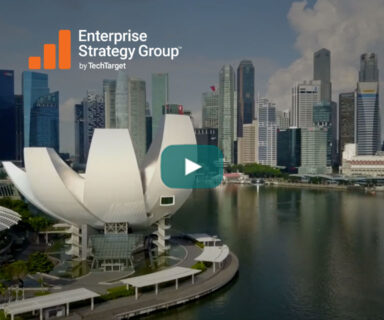- February 28, 2023
- Partner Marketing
The Golden Rules of Partner Marketing
This blog is a part of a series highlighting the perspectives of partner marketing executives across the globe. You’ll hear our guest writers’ experiences facing challenges in the partner ecosystem and their insights from their years of experience.
When I tell people that I work in partner marketing, I am often met with looks of confusion, particularly in general social settings. But we’re partner marketers and we know what it means, right? I tell people to think about it like this: I help all the great companies that work with mine sell more products and services. We play a critical role within the partner ecosystem and partners regularly look to us to be the expert when it comes to our company’s products and how to market them.
Partner marketing can take many shapes and forms – whether that be building and driving bespoke 1:1 strategies and plans in conjunction with a select group of larger strategic partners, or providing a scalable model for smaller, local partners that are sometimes managed by distributors.
So, how do you take a partner marketing strategy from good to great?
Rule #1: Consider all your partners – big and small
It all starts with a strong team that should focus on providing partners with simple, self-service and co-brandable content on your partner portal. Simpler is always better, especially since most smaller partners have limited resources and sometimes are comprised of interns, a single marketing manager or even a sales leader who moonlights as a marketer on the side. They don’t have time to run big marketing campaigns.
Rule #2: Get partner marketing a seat at the table
When looking to build a 1:1 bespoke campaign, make sure that partner marketing has a seat at the table from the start. It’s incredibly important to be “in the room” when partners are building their go-to-market strategy with your company. There should be a team that includes Partner Sales, Marketing and technical resources from both companies. When Marketing is included from the start, it allows us to build a plan that aligns to the goals of the relationship and ensures that set targets and objectives are met.
Rule #3: Outline clear partner messaging
Once the strategy is in place, you can attack the funnel from every which way, whether that be the top, bottom or middle. Our job is not just to build the pipeline, but also to help accelerate and close it. There are many different tactics that can be implemented depending on the goals of the partnership.
If you’re starting a new relationship with a partner, you need to ask yourself: “What do you know?” Build a key messaging document that identifies your target audiences, including personas, industries, business size and more. Look to answer questions like: What problems are you solving for the customer? and How do you differentiate your messaging from your competition? The messaging you create is key and nothing beats a customer testimonial – hands down. Make sure your sales team is working on getting that commitment from customers from the start. You may want to have an account map planning session and with that you can create some account-based marketing (ABM) campaigns targeting those identified accounts. This is where digital marketing is a great tactic to implement. You can reach a broader audience at a lower cost to build the top of your marketing funnel.
Rule #4: Accelerate pipeline through in-person meetings
Once you are further along in your strategy and have a solid pipeline, now is the time to accelerate that pipeline. You need to help create those “collision points” in the field. These are opportunities for your customer pipeline to meet with your sales teams, other customers, third-party influencers and executives. This can happen by hosting an event on your own or looking for industry events, such as tradeshows, where you know both parties will be in attendance. This can be a great stage – both literally and figuratively – in the marketing funnel to share evidence as to why your company is the best to work with. When possible, include proof points from analyst papers and customer references. Always remember, it’s not about selling the product, but selling the value the customer will receive from the solution.
Finally, while you can enjoy the event (and I always do), don’t forget about the close! Smaller, more intimate C-level events are the most influential event you can hold. Make sure you have a satisfied customer in attendance at these events. Customers are usually more comfortable once they hear from a peer about a successful launch of a new product or solution and the benefits they saw when using it. This creates an environment for potential customers to open up and ask questions and feel comfortable with the answers.
Connect all your partner marketing tactics to pipeline
As marketers, we know that all these tactics must be happening at the same time to keep the pipeline flowing and are not implemented as one-off activities. When budget, headcount or time is constrained, make sure your team understands the impact this will have on the pipeline. Speaking of pipeline, all of these activities should and will drive pipeline – and showing pipeline is the value our team brings. Make sure you are always tracking and reporting the ROI – and communicate this consistently. When done correctly, it can even get you more headcount and budget.
If you walk away with only one nugget here, know that marketing must have a seat at the table from the start and communicating the value we can bring is priceless. At the end of the day, we want sales teams to view Marketing as a valuable tool (or secret weapon) that they rely on and think of their partner marketing manager as their dedicated CMO.
To hear Kristin speak at the Partner Marketing Visionaries Summit on March 29, 2023, register now.
partner marketing, partner marketing ecosystems



